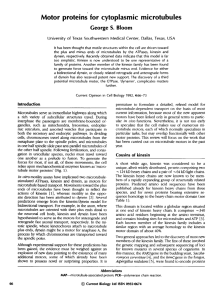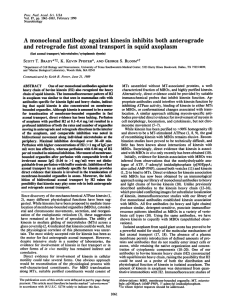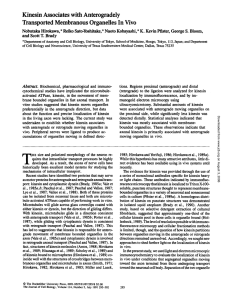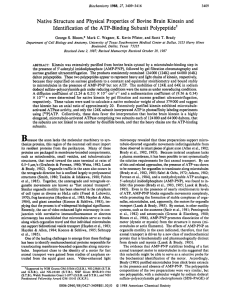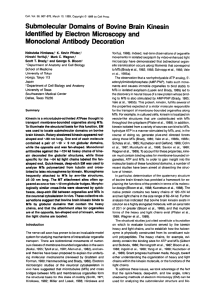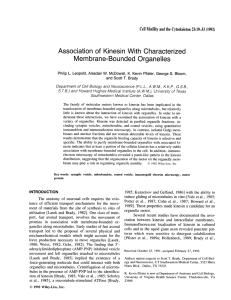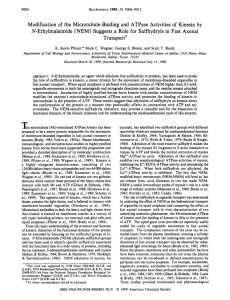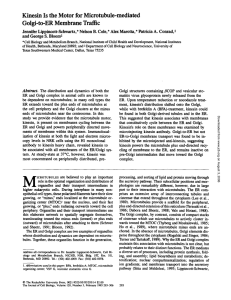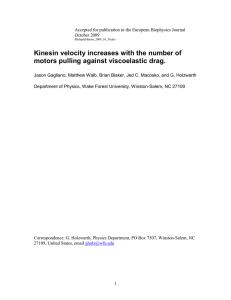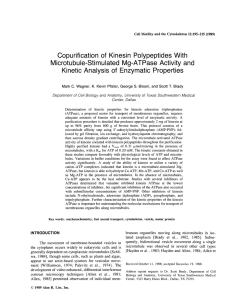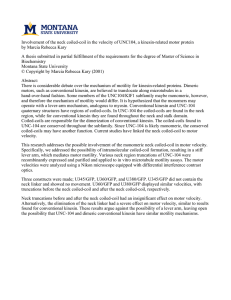Document 13544481
advertisement
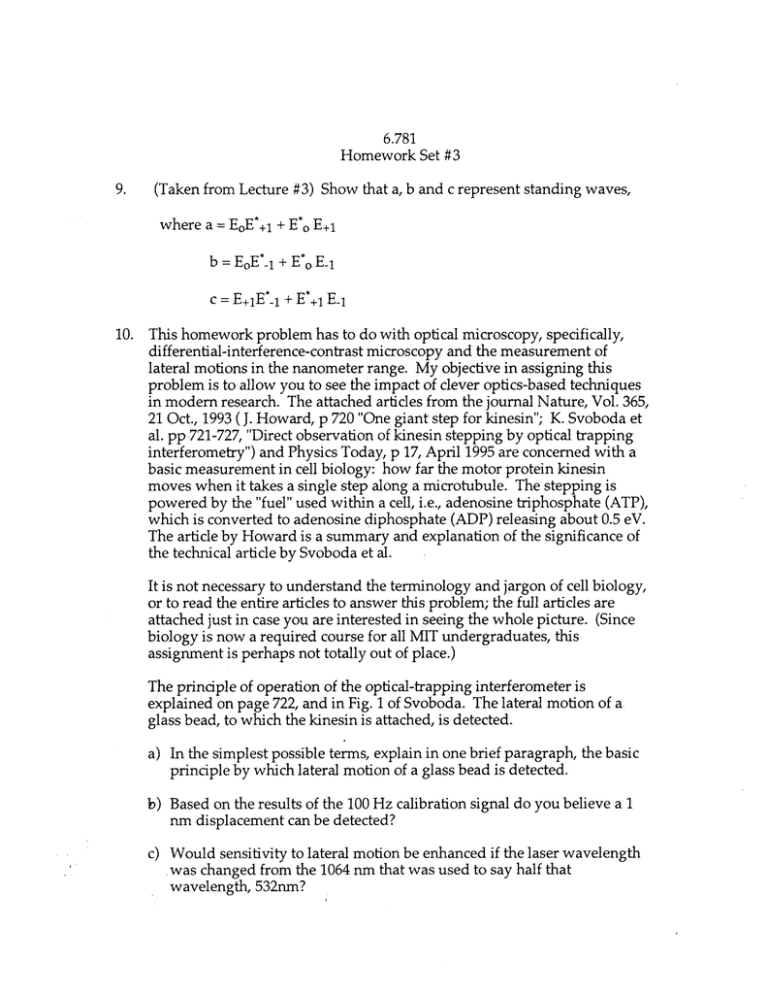
6.781 Homework Set #3 9. (Taken from Lecture #3) Show that a, b and c represent standing waves, where a = EoE*+1 + E* E+ 1 b = EoE* -1 + E c =E+lE*-1 E-1 + E*+1 E-1 10. This homework problem has to do with optical microscopy, specifically, differential-interference-contrast microscopy and the measurement of lateral motions in the nanometer range. My objective in assigning this problem is to allow you to see the impact of clever optics-based techniques in modem research. The attached articles from the journal Nature, Vol. 365, 21 Oct., 1993 (J. Howard, p 720 "One giant step for kinesin"; K. Svoboda et al. pp 721-727,"Direct observation of kinesin stepping by optical trapping interferometry") and Physics Today, p 17, April 1995 are concerned with a basic measurement in cell biology: how far the motor protein kinesin moves when it takes a single step along a microtubule. The stepping is powered by the "fuel" used within a cell, i.e., adenosine triphosphate (ATP), which is converted to adenosine diphosphate (ADP) releasing about 0.5 eV. The article by Howard is a summary and explanation of the significance of the technical article by Svoboda et al. It is not necessary to understand the terminology and jargon of cell biology, or to read the entire articles to answer this problem; the full articles are attached just in case you are interested in seeing the whole picture. (Since biology is now a required course for all MIT undergraduates, this assignment is perhaps not totally out of place.) The principle of operation of the optical-trapping interferometer is explained on page 722,and in Fig. 1 of Svoboda. The lateral motion of a glass bead, to which the kinesin is attached, is detected. a) In the simplest possible terms, explain in one brief paragraph, the basic principle by which lateral motion of a glass bead is detected. b) Based on the results of the 100 Hz calibration signal do you believe a 1 nm displacement can be detected? c) Would sensitivity to lateral motion be enhanced if the laser wavelength was changed from the 1064nm that was used to say half that wavelength, 532nm? Homework Set #3 -2­ d) Why isn't an electron microscope suitable for this measurement? 11. Read the attached commentary "Shattering the diffraction limit of light: A revolution in Fluorescence microscopy?" by Shimon Weiss, Vol. 97, PNAS, August 1, 2000. a) Summarize in as few words as possible the essential elements of the scheme. b) By what factor is the lateral resolution improved? c) By what factor is the axial resolution improved? References Problem 10 Howard, Jonathan. "One Giant Step for Kinesin." Nature 365 (October 21, 1993): 696-697. Svoboda, Karel, Christoph F. Schmidt, Bruce J. Schnapp, and Steven M. Block. "Direct Observation of Kinesin Stepping by Optical Trapping Interferometry." Nature 365 (October 21, 1993): 721-727. Levi, Barbara Goss. "Measured Steps Advance the Understanding of Molecular Motors." Physics Today (April 1995): 17-19. Problem 11 Weiss, Shimon. "Shattering the Diffraction Limit of Light: A Revolution in Fluorescence Microscopy?" PNAS 97, no. 6 (August 1, 2000): 8747-8749.
![Anti-KIF5B antibody [KN-03] ab11883 Product datasheet 1 Abreviews 1 Image](http://s2.studylib.net/store/data/012617504_1-d03d83a1408f4a0ccbbce0d16ba473db-300x300.png)
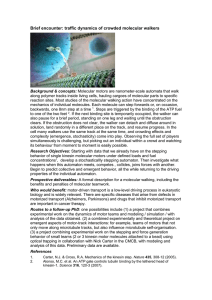

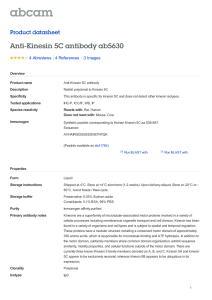
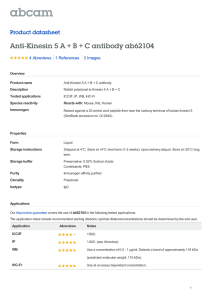

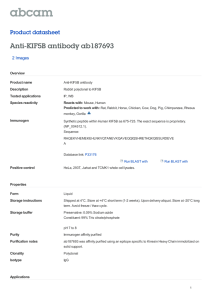
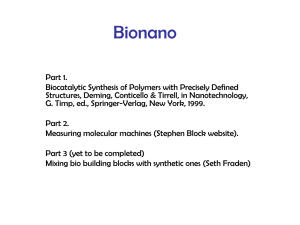
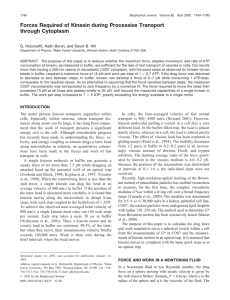
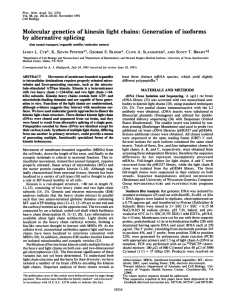
![[ 14] P u r i f i c... A s s a y o f ...](http://s2.studylib.net/store/data/014360325_1-c03b3ce12365db557d070a26d965c7c2-300x300.png)
